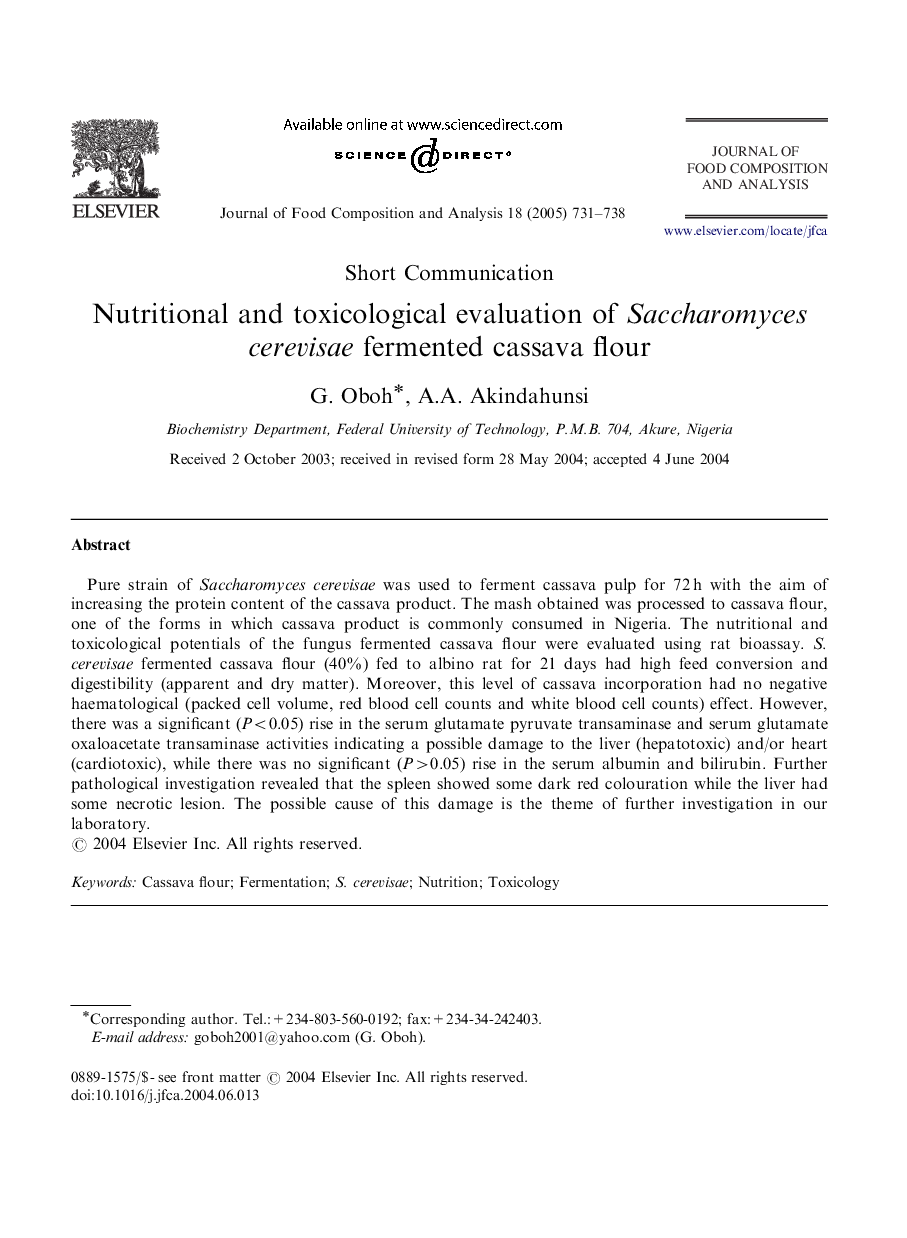| Article ID | Journal | Published Year | Pages | File Type |
|---|---|---|---|---|
| 10553022 | Journal of Food Composition and Analysis | 2005 | 8 Pages |
Abstract
Pure strain of Saccharomyces cerevisae was used to ferment cassava pulp for 72Â h with the aim of increasing the protein content of the cassava product. The mash obtained was processed to cassava flour, one of the forms in which cassava product is commonly consumed in Nigeria. The nutritional and toxicological potentials of the fungus fermented cassava flour were evaluated using rat bioassay. S. cerevisae fermented cassava flour (40%) fed to albino rat for 21 days had high feed conversion and digestibility (apparent and dry matter). Moreover, this level of cassava incorporation had no negative haematological (packed cell volume, red blood cell counts and white blood cell counts) effect. However, there was a significant (P<0.05) rise in the serum glutamate pyruvate transaminase and serum glutamate oxaloacetate transaminase activities indicating a possible damage to the liver (hepatotoxic) and/or heart (cardiotoxic), while there was no significant (P>0.05) rise in the serum albumin and bilirubin. Further pathological investigation revealed that the spleen showed some dark red colouration while the liver had some necrotic lesion. The possible cause of this damage is the theme of further investigation in our laboratory.
Related Topics
Physical Sciences and Engineering
Chemistry
Analytical Chemistry
Authors
G. Oboh, A.A. Akindahunsi,
